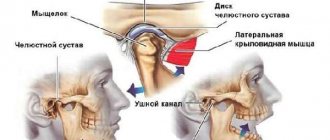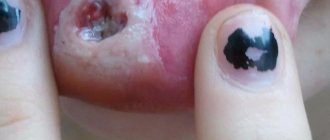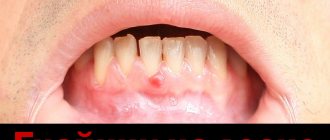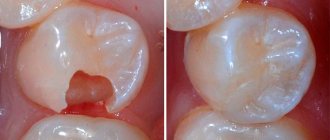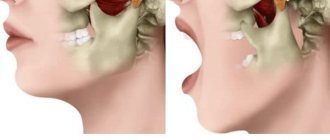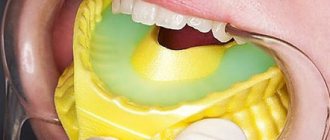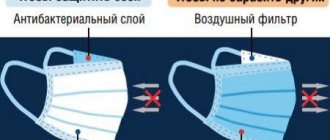What are the stages of development of coronavirus disease?
There are 4 periods of the infectious process:
- Incubation, this means that some time passes from the moment of contact with a person who is an excretor to the first symptoms - from 2 to 14 days. It is important to monitor your condition.
- Flu-like, then the temperature may rise, aches, muscle pain, throat pain, loss of smell and taste may appear. Nausea and vomiting may occur. Do I need to do x-rays and computed tomography? This is also useless because in the vast majority of cases we don't see anything on CT yet. A person may do this research, think that everything is fine, but in fact everything has just begun, so there is no need to do such research.
- Experts call it the “high period”, the symptoms become especially pronounced, shortness of breath, cough, and temperature above 38 are added. This is the high period when there is a need for hospitalization, and here all the studies will be informative.
- Convalescence, that is, when the disease has passed, the period of recovery, this period lasts quite a long time, from 14 days to 3-6 months, recovery occurs.
Advice from a doctor of medical sciences
Raushan Karabaeva warns that self-use of potent drugs can cause serious side effects. Vitamin supplements can also be harmful to health.
For a mild form of coronavirus infection, you must:
- drinking plenty of small amounts;
- vitamins C and D;
- balanced diet;
- at fever - paracetamol and ibuprofen.
In other cases, consultation with a doctor is necessary.
If you test positive for coronavirus, how to treat mild cases at home in adults and children after consulting with your doctor.
What to do if you have been diagnosed with coronavirus, how to treat it at home, what medications to take? Reviews from those treated at home, symptoms in adults and children.
Prevention
Primary and secondary prevention of helicobacteriosis have minor differences. The general rules for the two programs are identical. Only the recommendations for therapeutic measures differ. In the second case, the doctor’s recommendations must be strictly followed. If the course of medication is completed prematurely, there is a risk of not only relapse, but also life-threatening complications from the digestive tract.
General preventive measures:
- compliance with the rules of balanced and proper nutrition;
- eating only clean food and water;
- timely treatment of diseases of the digestive tract;
- implementation of measures to strengthen the immune system;
- compliance with personal hygiene standards;
- regular examinations by a gastroenterologist for abnormalities in the digestive system;
- mandatory diagnostic procedures for suspected Helicobacter pylori infection.
Video on the topic: Antibiotics against Helicobacter pylori.
Signs of infection
What you should pay attention to, the main symptoms of coronavirus are highlighted in bold:
- general weakness;
- diarrhea;
- cough;
- headache;
- myalgia and body aches;
- sweating;
- sore throat;
- malaise;
- increase in body temperature up to 38°C;
- disturbance of taste and smell;
- ringing or noise in the ears.
Medical experts list among the external symptoms of coronavirus infection redness of the skin of the hands with unclear boundaries, as well as the lower third of the lower leg, feet with a bluish-purple tint; in some cases, the rash has the character of pink-reddish spots.
Symptoms of pneumonia do not appear immediately, usually no earlier than five to seven days, the so-called respiratory type. These symptoms can even be a simple cough, shortness of breath, discomfort, severe limitation of inhalation and chest pain.
If these symptoms do not progress and the fever does not persist or linger for more than 7 days, I think there is no need to worry. This is not a reason to start taking antibiotics or run out and get a CT scan.
If a person sees within 2-3 days after these symptoms appear that they intensify, that either a second fever appears, or an increase in temperature, or that the first one does not stop, this may be a sign of serious lung damage and requires examination and change treatment tactics, increasing some kind of therapy.
Symptoms of intestinal inflammation
According to statistics, inflammatory diseases of the small and large intestines are the most common. They can be acute or chronic.
Duodenitis
Duodenitis is an inflammation of the mucous membrane of the duodenum.
Acute duodenitis is characterized by severe pain in the stomach, heartburn, belching, nausea, vomiting, and general weakness. Symptoms completely subside after treatment. The disease does not leave noticeable structural changes in the mucous membrane of the duodenum.
Chronic duodenitis is a long-term relapsing disease characterized by the development of foci of inflammation in the mucous membrane of the duodenum. It manifests itself as paroxysmal pain in the epigastrium or in the right hypochondrium of a bursting or twisting nature. Accompanied by a feeling of bloating, bitter belching, nausea and vomiting with bile.
Duodenitis is a polyetiological disease, but the most common cause of inflammation of the duodenum is Helicobacter pylori infection.
Based on the localization of the inflammatory process in the duodenum, bulbar (bulbit) and postbulbar duodenitis are divided. Bulbit - when the source of inflammation is in the initial (bulbar) section - is often combined with gastritis (inflammation of the gastric mucosa). Distal or postbulbar duodenitis, as a rule, is combined with inflammation in the pancreas, as well as the biliary system.
If inflammation is not treated, the chronic form of duodenitis leads to subsequent pathological structural changes and atrophy of the mucous membrane of the small intestine.
Enteritis
Enteritis - inflammation of the mucous membrane of the small intestine - is often combined with damage to other parts of the gastrointestinal tract. So, with inflammation of the mucous membrane of the stomach and small intestine, gastroenteritis is diagnosed; enterocolitis is diagnosed in the small and large intestines; with simultaneous damage to the stomach, small and large intestines, gastroenterocolitis is diagnosed. Inflammation occurs in acute or chronic form.
The picture of acute enteritis is typical for food poisoning and some infectious diseases (typhoid fever, cholera, salmonellosis). The disease also occurs due to irritation of the small intestinal mucosa by excessively spicy or rough foods or alcohol.
Acute enteritis first manifests itself as diarrhea, nausea, vomiting, and pain in the umbilical region. Then general symptoms appear: fever, weakness, sweating, headache. The disease progresses quickly.
Chronic enteritis develops over a long period of time, often against the background of concomitant gastritis. The disease manifests itself as dull, low-intensity pain around the navel, nausea, a feeling of bloating, and rumbling after eating. In severe cases, diarrhea is characteristic (stool frequency reaches 20 times a day). Feces contain gas bubbles and particles of undigested food. The patient's body weight decreases, weakness, general malaise, and obvious signs of hypovitaminosis (brittle nails, hair loss, dry skin) are felt.
Colitis
Inflammation of the mucous membrane of the colon can be isolated or combined with damage to the small intestine and/or stomach (enterocolitis, gastroenterocolitis).
Acute colitis is often of infectious origin (dysentery). Sometimes the cause of the disease is food poisoning.
Symptoms of acute colitis are severe cramping pain in the abdomen, frequent loose stools with an unpleasant odor, mucus, and in severe cases blood, tenesmus (painful urge to defecate), general malaise, weakness, and often fever.
Chronic non-infectious colitis develops as a complication of gastritis, pancreatitis, enteritis, and may be associated with systematic dietary errors or prolonged intoxication. It manifests itself as dull aching pain in the right, left or lower abdomen, prolonged constipation or diarrhea, sometimes alternating them. Patients are concerned about flatulence, loss of appetite, nausea, weakness, and malaise. Psycho-emotional disorders and depression are common.
Nonspecific ulcerative colitis
The causes of the disease are not fully understood. Most likely, it is genetic in nature.
In ulcerative colitis, the rectum is primarily affected. If the disease continues for a long time, the inflammatory process spreads to other parts of the large intestine.
The main symptom of the disease is bleeding. Blood is found in the stool even during remission.
Ulcerative colitis is characterized by diarrhea, sometimes alternating with constipation. The pain most often occurs in the left side of the abdomen.
Crohn's disease
Crohn's disease is similar in nature to ulcerative colitis, but, unlike it, affects all parts of the gastrointestinal tract. Most often, inflammation affects different parts of the ileum, colon and rectum.
Crohn's disease occurs over a long period of time, with exacerbations alternating with remissions. In the acute period, patients are concerned about cramping abdominal pain, bloating, diarrhea, increased body temperature, and weight loss. Blood and mucus are noticeable in the stool.
Often with Crohn's disease, anal fissures and pain in the anal area occur. Characterized by joint pain and skin rashes. With a long course of the disease, complications are possible: fistulas, abscesses, strictures of the affected areas with the development of intestinal obstruction, which can be partial or complete.
Appendicitis
The most common disease of the appendix is acute inflammation, requiring surgical intervention. Inflammation usually occurs as a result of blocking the opening of the appendix with a hard foreign body.
Symptoms of appendicitis include severe pain in the socket of the right hip joint, vomiting, leukocytosis (excess white blood cells) and high fever.
The only treatment is removal (appendectomy). Otherwise, perforation and inflammation of the peritoneum may occur, resulting in death.
What adults should pay attention to
An increase in body temperature within 3-5 days is observed during the normal course of CVI, you must contact the emergency call center or clinic where you belong geographically, notifying about quarantine and indicating the reason for the call.
We especially want to focus attention on patients from the high-risk group, these are people over 65 years of age and people with underlying diseases of the cardiovascular, endocrine system, cancer, as well as people after organ transplantation, they should not self-medicate, they should immediately contact their local doctor .
If you receive a positive test result for the presence of COVID-19, you must:
- do not leave home, self-isolate while wearing a mask;
- carry out thermometry at least three times a day;
- observe all personal hygiene measures;
- use individual dishes;
- ventilate the room.
How are the symptoms of coronavirus different from colds and flu?
Let's look at the picture to see the similarities and differences between the signs of coronavirus, ARVI and influenza.
No need to lower the temperature to 37-38°C
In this case, the immune system reduces its effectiveness in fighting infection, Professor Nikiforov of the Medical and Biological Agency said in an interview, he noted that there is nothing extraordinary about coronavirus and recalled that at the initial stage they use the same methods as in the treatment of influenza and ARVI.
High temperature is a sign of infection and illness, but it is also a symptom that the body is fighting, so when the temperature reaches 38.3 - 38.5 ° C you do not need to do anything, because this is the optimal temperature for the immune system in conditions of aggression, and if it is already higher than these indicators, then something has gone wrong; here you can gradually reduce the temperature, but not to 36.6°C.
Is it possible to cure ureaplasma without antibiotics?
There are situations when a course of treatment with antibiotics for ureaplasma is impossible.
Medicines have the following contraindications:
- period of gestation and breastfeeding;
- children's age group;
- severe pathological conditions of the kidneys and liver;
- allergic reactions to the components of the medication.
When a patient has the listed contraindications, the question arises: is it possible to cure ureaplasma without the use of antibiotics?
If a woman has been diagnosed with ureaplasma of more than 10 to 4 degrees CFU/ml and an acute inflammatory process is observed, in this case, unfortunately, antibacterial drugs cannot be avoided. If there are restrictions on use, the doctor selects antibiotics for ureaplasma from the group that is safest for women with contraindications.
Additionally, immunomodulatory drugs are prescribed. They are necessary to strengthen the body's defenses. In this way, the risk of relapse can be significantly reduced. To eliminate the symptoms of the inflammatory process, local remedies are prescribed. For example, Clotrimazole helps well with ureaplasma. Such treatment can also be prescribed in the absence of an inflammatory process, when antibiotics are contraindicated, and the level of concentration of pathogenic microorganisms is higher than the permissible norm.
More home treatment options
What medications are best to take for coronavirus - recommendations from the head of the Center for Promoting Public Health of the National Center for Public Health of the Ministry of Health of the Republic of Kazakhstan, Zhazira Emberdieva:
- When the first symptoms appear, you need to drink plenty of fluids and stay in bed;
- Among antipyretic drugs, it is recommended to use paracetamol, ibufen, nimesulide;
- Antiviral drugs – ingavirin, Theraflu, Fervex;
- Anticoagulants - acetylsalicylic acid (aspirin), potassium preparations - according to indications;
- ACC 600, inhalations, herbal syrups (prospan), licorice root and other drugs help with cough;
- We recommend gargling with antiseptics, saline solutions, and taking vitamins C and D;
- Follow the pronation position - lie on your stomach for one hour 4-5 times a day to facilitate ventilation of the lungs and prevent shortness of breath, in addition, we recommend doing breathing exercises.
For mild to moderate cases of the disease, antibiotics are contraindicated . Let’s consider other popular treatment methods, as well as prices for medications. Medicines are taken in consultation with a doctor:
- CEF-3 for 14 days (one ampoule costs about 1,400 tenge, for 2 weeks it is 19,600 tenge);
- Antibiotic Sumamed - (2 packages of 5200 tenge, that’s 10,400);
- Thrombo ACC for blood thinning - 1400 tenge;
- Antiviral drug. For example, Ingavirin - about 5000 tenge.
According to this treatment plan, the total amount of drugs will be 36,400 tenge. This does not count the costs of the treatment room, where many are forced to seek medical care, and the drug “Hilak Forte” to balance the intestinal microflora.
Now we are considering another option, it is given in the recommendations of the head of the Center for Promoting Public Health of the National Center for Public Health (we take only medications).
Another variant:
- Paracetamol, Aspirin, Nimesulide tab. — to reduce temperature (1400 tenge);
- Ingavirin 90 mg 1 capsule per day, 5 days. (5000);
- Tamiflu 75 mg 2 times a day for 5 days (2300 tenge);
- ACC 600 mg 2 times a day for 5 days; (1300 tenge);
- Gargling with Furacilin solution 4-5 times a day (60 tenge).
We believe that this example is for a milder form of the disease; the total cost for such treatment will be 9860 tenge.
And one more method, also often practiced:
- Sumamed, 5 days, 2 packages −10,400 tenge;
- Antiviral drug - within 5,000 tenge;
- Hilak Forte - 2300 tenge.
The check will be issued in the amount of 17,700 tenge.
It turns out that in the simplest calculation a resident can spend from 10 to 36 thousand tenge on his treatment, provided that he is the only sick person in the family.
Amounts, treatment methods and recommendations are different, and if you have undergone treatment at home, share your experience with us in your reviews.
How long does it last
The duration of such an infection is no different from the duration of coronavirus with clinical manifestations. But provided that a dangerous complication has not developed - viral-bacterial pneumonia. How long does asymptomatic carriage last? From the moment of infection to complete recovery, it takes from two and a half to three weeks. According to statistical data, infectious pathogens are detected in asymptomatic patients using the polymerase chain reaction method within 21-22 days after infection.
Drugs for treatment under medical supervision and in hospitals
Let's consider drugs for treatment in hospitals under the supervision of doctors in Russia, as well as the cost after the Ministry of Health of the Russian Federation fixed the maximum prices for drugs for COVID-19 at the end of October 2020.
"Avifavir"
The drug Avifavir has been found to effectively suppress the SARS-CoV-2 virus. Officially approved for use in the treatment of the new coronavirus infection COVID-19. The cost of the drug will be 5,000 rubles for 50 tablets per package. The drug is prescribed in a hospital setting. The total duration of treatment is 10 days or until viral clearance is confirmed, if earlier (two consecutive negative PCR results obtained at least 24 hours apart).
"Ilsira"
Indications: life-threatening acute respiratory distress syndrome, accompanied by increased release of cytokines. The price of Ilsira will be 47,531 rubles. for 180 mg/ml.
"Favipiravir"
Favipiravir selectively inhibits influenza virus RNA polymerase, an enzyme required for viral replication after infection of human cells. You do not need to use this drug without a doctor's prescription.
It was developed as a remedy against influenza, but during experiments, according to Japan, it showed positive results in the treatment of coronavirus disease, suppresses the virus that causes coronavirus infection and is recommended for therapy.
The maximum cost with surcharges can be 6,875 rubles including VAT, we are talking about packages of 50 tablets.
"Areplivir"
The drug contains 200 mg of the substance favipiravir described above, which is effective in the treatment of the new coronavirus infection COVID-19. 40 Areplivir tablets cost 4,000 rubles, 100 tablets cost 10,000 rubles.
The head of WHO named the only medicine that has been proven effective in treating coronavirus
Dexamethasone is the only drug whose effectiveness in treating coronavirus infection has been proven and which is prescribed to severely ill patients. This medicine was named by the director of the World Health Organization (WHO), Tedros Adhan Ghebreyesus, on October 16, 2020.
According to him, the corticosteroid dexamethasone is currently the only therapeutic agent shown to be effective against COVID-19 in patients with severe disease .
WHO chief Ghebreyesus noted that two other drugs that were hoped for at the beginning of the COVID-19 pandemic, remdesivir and interferon, did not prove effective. He recalled that in June, studies on the use of hydroxychloroquine to treat patients infected with coronavirus, and in July, a combination of lopinavir and ritonavir, also stopped.
According to WHO, interim study results showed that remdesivir and interferon had little effect in preventing death from COVID-19 or shortening the treatment period.
Consequences and problems for those who have recovered from coronavirus
Most of those infected with CAVID-19 experience health problems over the next two to three months, with multiple organ functions deteriorating, according to a study from Oxford University.
“The study showed that within two to three months of the onset of the disease, 64% of patients experienced persistent shortness of breath, and 55% complained of a constant feeling of fatigue.
Abnormalities in the lung tissue were observed in 60% of those infected with CAVID-19, in the kidneys in 29%, in the heart in 26% and in the liver in 10%. Organ abnormalities were present even in patients whose disease was not critical,” the study says.
Alexander Myasnikov - why does everyone get sick differently?
COVID is a disease caused by a new coronavirus, Myasnikov writes in his blog on Telegram. To understand the essence of the problem, it is more correct to say that we are dealing with two diseases. COVID-1. Which 90% of infected people who have symptoms will get sick (40% or more have no symptoms at all). This is a banal acute respiratory infection. Which is completely in the spirit of coronaviruses.
Even in the pre-Covid era, 30% of all acute respiratory infections were (and are still caused by) coronaviruses. Not new ones, but our good old human coronaviruses, of which we know 4 varieties. Known to virologists since the 60s of the last century. (And they also once came to the human population from bats, but who bothered with such subtleties then?!)
COVID-2. Viral pneumonia. They are orders of magnitude less common than asymptomatic carriage and acute respiratory infections. And here the prognosis depends on the degree of damage to the lungs by pneumonia and the body’s functional reserves for resistance. By the way, viral pneumonia can also be caused by “human” coronaviruses. With mortality in the elderly - attention - 10%. Accordingly, COVID-1 is only outpatient treatment. COVID-2 - depending on the clinical picture.
In principle, we can go further and propose a classification based on clinical manifestations:
- COVID-1 Positive test and no symptoms;
- COVID-2 acute respiratory infections;
- COVID-3 viral pneumonia with minimal lung damage;
- COVID-4 viral pneumonia with extensive lung damage OR viral pneumonia regardless of the extent of lung damage, but developed in patients with a set of risk factors.
Agree, then the publication of COVID statistics will be much more informative!
Who is at risk?
People at high risk of COVID complications need to be especially careful and for them the early appearance of shortness of breath and its intensification should be a clear signal to call an ambulance.
Let us remind you once again that this is considered high risk:
- Age over 65 years;
- People in hospitals, nursing homes, sanatoriums (where they live crowded);
- Diabetes;
- Obesity;
- Heart disease, including hypertension;
- Chronic lung diseases and severe asthma;
- Chronic kidney disease;
- Liver diseases;
- Immunodeficiency;
- Chronic smoking;
When should you call an ambulance and think about hospitalization?
Signs to call an ambulance:
- Shortness of breath with little physical activity or at rest. Typically, with COVID, shortness of breath may appear between days 4 and 8. If it is moderate, does not interfere with conversation and allows you to climb, for example, 2 flights of stairs, then in young people without chronic diseases this is unlikely to indicate a problem. If shortness of breath appears 2-3 days after the first onset of symptoms (fever, cough), limits physical activity, or occurs at rest, this is always serious;
- Symptoms of dehydration: dizziness, dry mouth, palpitations, rare urination;
- Constantly high temperature above 38;
- Lethargy, drowsiness, apathy, confusion of thoughts.
When should you not call an ambulance?
Symptoms:
- Temperature up to 38 degrees. Let me remind you - NORMAL HUMAN BODY TEMPERATURE is 37.5 when measured under the armpit and 38 when measured rectally;
- Body aches, muscle pain, headache, sore throat;
- Cough without shortness of breath.
Therapy for coronavirus infection
In 2020, the treatment of coronavirus in humans does not have specific recommendations due to the lack of effective drugs and a vaccine as such. All patients undergo symptomatic and supportive therapy. If pneumonia is suspected, it is recommended to do a lung tomography.
Important
! The Ministry of Health of the Russian Federation recommends the use of Ribavirin, Lopinavir or Ritonavir, as well as interferon-based drugs. These medications should not be found in pharmacies, as recommendations were given to specialists in infectious diseases hospitals where cases of coronavirus infection have been confirmed.
Antipyretic drugs can also only be prescribed by a doctor, depending on the specifics of the case.
